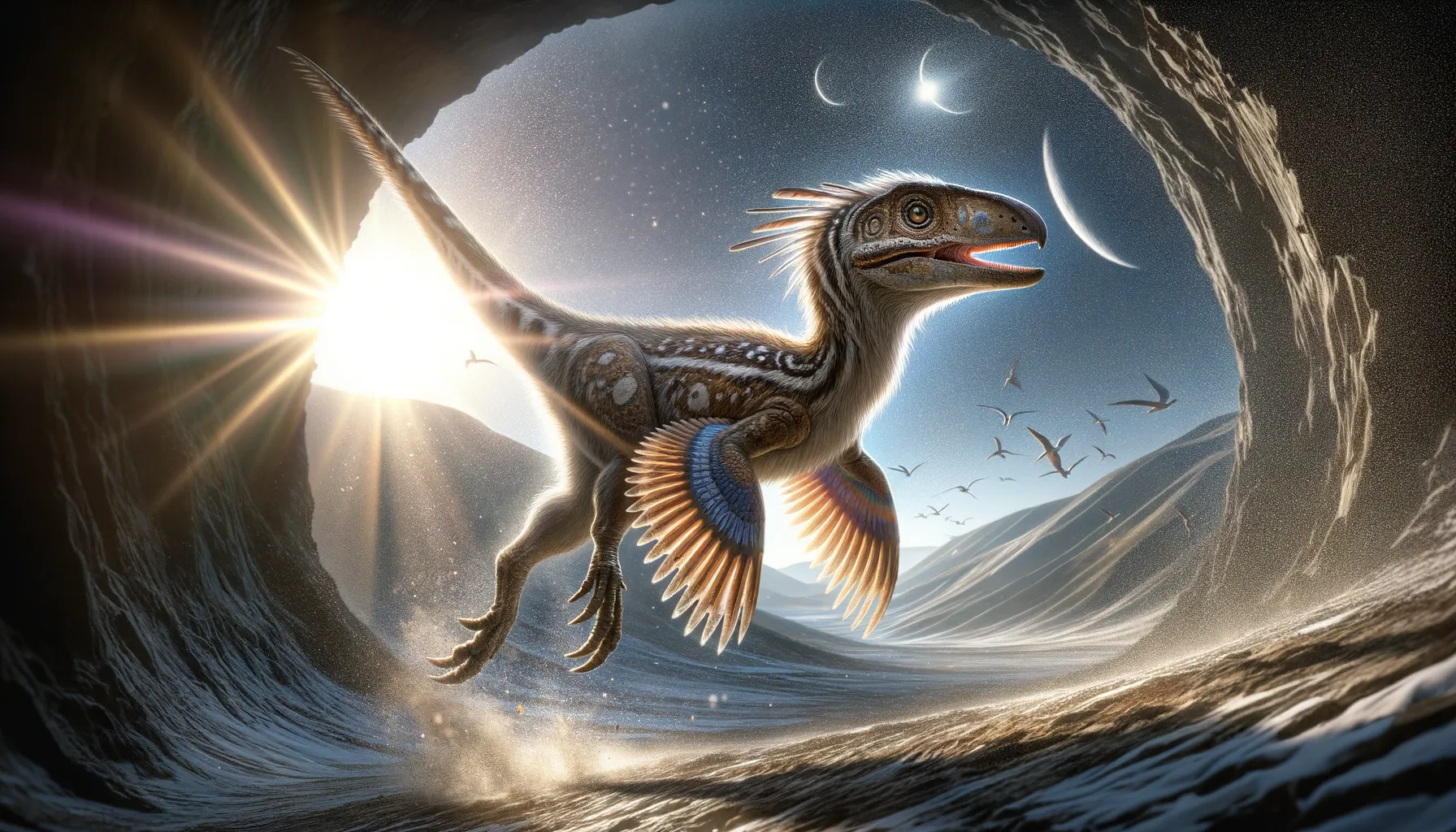
Nemegtia
Tiny theropod with bird-like allure!
Period
Cretaceous
Length
Roughly 1 meter long.
Height
About 30 to 40 centimeters tall.
Weight
Approximately 2 to 3 kilograms.
Nemegtia was a small theropod dinosaur, known for its bird-like features, which provide insights into the evolutionary transition from dinosaurs to modern birds. Living during the Late Cretaceous period, this dinosaur had a lightweight body, suggesting a possible trend towards flight. Fossil records mainly found in Mongolia's Nemegt Basin highlight its importance in the paleontological study of avian evolution.
Diet
Nemegtia was likely an omnivore, feeding on small animals, insects, and possibly some plant material. Its diet would have been influenced by its small size and the availability of food in its environment.
Hunting
As a small predator, Nemegtia would have relied on stealth and quick movements to catch insects and small vertebrates. Its hunting behavior might have involved sudden bursts of speed to capture prey or foraging in crevices for insects.
Environmental challenges
Nemegtia lived in a semi-arid, seasonal climate with possible dry and wet cycles. It faced challenges such as fluctuating prey availability and competition from other small theropods. Environmental changes could have influenced its evolution, driving adaptations for survival in its unique niche.
Speed
Relatively slow due to its small size.
Lifespan
Likely around 10 to 20 years.
First discovery
Discovered in the late 20th century in Mongolia.
Fun Facts
- Nemegtia was a small dinosaur that lived during the Late Cretaceous period, around 70 million years ago.
- It was part of the Oviraptoridae family, which are known for their beak-like mouths.
- Fossils of Nemegtia were first discovered in the Gobi Desert of Mongolia.
- Despite their name meaning 'egg thief', oviraptorids like Nemegtia were likely omnivores.
- This dinosaur was named after the Nemegt Basin where its fossils were found.
- Nemegtia is thought to have had feathers, much like modern birds, hinting at its evolutionary link.
- Its size was relatively small, comparable to that of a large chicken.
Growth and Development
Nemegtia likely experienced rapid growth in its early years to quickly reach maturity, reducing predation risks. Its development from hatchling to adult might have involved distinct morphological changes, particularly in its limbs and beak-like snout.
Habitat
Nemegtia inhabited the Nemegt Basin region, characterized by a mix of river channels, ponds, and floodplains. This environment provided a rich variety of ecological niches, supporting diverse dinosaur communities. The presence of water bodies likely attracted both prey and predators, influencing its behavior and territory.
Interaction with other species
Nemegtia shared its habitat with various small and large theropods, leading to potential competition for food resources. Its interaction with other species included avoiding larger predators while coexisting with smaller or similar-sized dinosaurs. Such interactions might have driven social behaviors or territorial adaptations.
Natural lifespan
Nemegtia likely had a natural lifespan of 10 to 20 years.
Reproduction
Nemegtia likely reproduced by laying eggs, similar to modern birds and other dinosaurs. Its nesting behavior is unknown but could involve constructing nests in sheltered areas. Parental care might have been limited, with young dinosaurs being relatively self-sufficient after hatching.
Social behaviour
Nemegtia might have exhibited some level of social behavior, possibly living in small groups for protection against predators. Group living could have facilitated cooperative behaviors such as joint foraging or nest defense.
Fossil locations
Fossils of Nemegtia have been primarily found in the Nemegt Basin of Mongolia, an area renowned for its rich Cretaceous deposits. The region has provided numerous important finds, offering insights into the diverse dinosaur faunas of that period.
